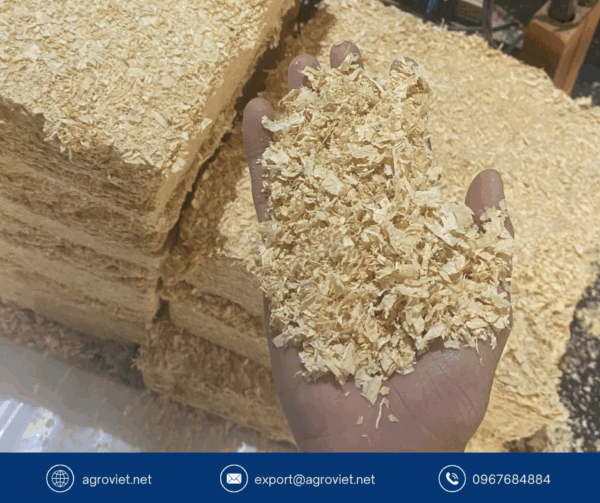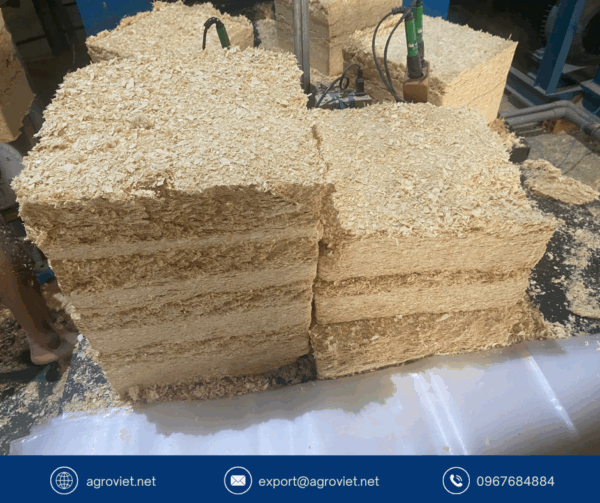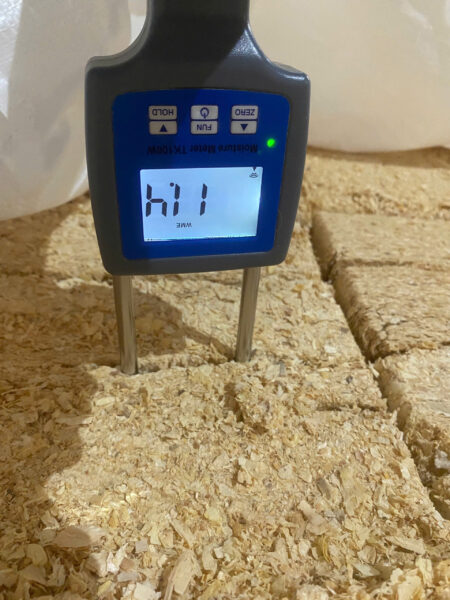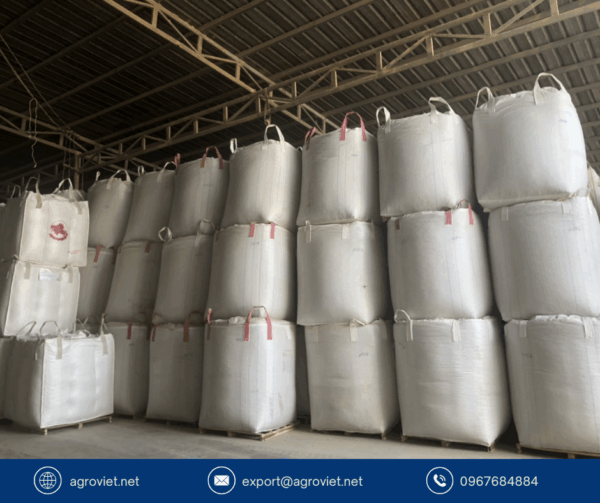Wood shavings are a cornerstone bedding material in livestock farming, renowned for their exceptional moisture absorption (up to 150% of their dry weight), odor neutralization through natural aromatic compounds, and provision of a comfortable, low-stress environment for animals such as cattle, pigs, and poultry. However, maximizing the benefits of wood shavings extends beyond purchasing a quality product—it hinges on meticulous spreading techniques and strategic storage practices to optimize usage and slash long-term expenses.

With livestock farming costs rising by an estimated 8-10% annually due to feed, labor, and material prices, adopting efficient methods can yield significant savings, enhance animal health, and boost productivity by up to 15%, according to a 2023 study by the Vietnam Livestock Association. This article provides an in-depth guide on how to spread and store wood shavings effectively, supported by specific data and evidence, to help farmers achieve cost efficiency and sustainability.
1. Selection and Preparation Before Spreading Wood Shavings
Choosing the Right Type of Wood Shavings
The foundation of cost-effective livestock bedding lies in selecting the appropriate wood shavings type, tailored to specific animal needs and environmental conditions. Pine wood shavings stand out due to their ability to absorb up to 200% more moisture than mixed wood types and their natural resin content, which reduces ammonia levels by 30-40% in pens, making them ideal for cattle (requiring 8-10 cm bedding depth) and poultry (5-7 cm). Research from the Journal of Animal Science (2022) indicates that pine shavings can lower respiratory issues in livestock by 25% compared to untreated mixed wood. Farmers should prioritize products with a moisture content below 12%, particle sizes of 2-15 mm, and certification for dust-free composition (less than 0.5% impurities) to minimize health risks.

Before use, inspect each batch for mold, excessive moisture (above 15%), or foreign matter, as contaminated shavings can degrade within 2-3 weeks, necessitating replacement and costing an additional $50-$100 per ton annually. Opting for pre-treated shavings with anti-bacterial coatings can extend usability by 20-30 days. Packaging in durable PP bags or compressed bales, designed to withstand 6 months of storage without quality loss, further reduces waste. A well-chosen product can cut replacement frequency by 1-2 cycles per year, translating to savings of approximately $200-$300 per 1,000 square meter pen annually.
Preparing the Livestock Pen
A clean and dry pen is essential to maximize wood shavings longevity and effectiveness. Begin by removing all manure, urine, and debris using a pressure washer (set at 1,500-2,000 PSI) or manual scraping, followed by a disinfectant rinse to eliminate 99.9% of bacteria, as recommended by the FAO (2021). Allow the pen to air-dry for 24-48 hours, ensuring moisture levels drop below 20%, which can be verified with a handheld moisture meter. This preparation can extend bedding life by 15-20% by preventing early saturation. Neglecting this step can lead to a 40% increase in bedding replacement costs due to accelerated breakdown, based on data from a 2020 Thai agricultural survey.

Regular maintenance, such as weekly spot-cleaning of high-traffic areas, can further reduce moisture buildup by 10-15%. Ensure proper drainage systems are in place, with a slope of at least 1-2% to channel water away, as poor drainage can double the frequency of bedding changes. A well-prepared pen not only enhances animal welfare—reducing stress-related weight loss by 5-7%—but also aligns with best practices to achieve long-term cost savings.
2. Efficient Spreading Process for Wood Shavings
Appropriate Quantity and Spreading Technique
The key to cost efficiency lies in applying the right quantity of wood shavings with precision. For poultry, a 5-7 cm layer (approximately 10-15 kg per 10 square meters) suffices, while cattle and pigs require 8-10 cm (20-25 kg per 10 square meters) to handle higher urine output, absorbing up to 10 liters per square meter daily. Use a shovel or a mechanical spreader calibrated for even distribution, aiming for uniformity within ±1 cm to avoid over-application, which can increase usage by 10-15% (adding $30-$50 per ton). Studies from the University of Agricultural Sciences (2023) show that uneven spreading can reduce bedding effectiveness by 20%, leading to more frequent replacements.
After the initial spread, monitor the bedding every 7-14 days and add a 2-3 cm top-up layer (5-7 kg per 10 square meters) when the surface becomes damp or soiled. This approach can extend bedding life from 30 days to 60-90 days, depending on pen management, saving 15-20% in material costs—equivalent to $100-$150 per 1,000 square meters annually. Keeping a log of topping-up schedules and adjusting based on animal density (e.g., 10-15 birds per square meter for poultry) ensures optimal resource use without compromising hygiene.
Moisture Control and Hygiene
Moisture management is critical, as excess humidity (above 50%) can halve the lifespan of wood shavings, increasing replacement costs by 30-40%. Install ventilation fans with a capacity of 4-6 air changes per hour or heaters to maintain pen humidity below 40-45%, as advised by the American Society of Agricultural Engineers (2022). When wet spots emerge—typically covering 5-10% of the pen area after 10-14 days—remove and replace them with 2-3 kg of fresh shavings per affected square meter, preventing moisture spread that could affect 50-70% of the bedding if ignored.

Regular hygiene practices, such as daily removal of manure piles (1-2 kg per animal daily), can reduce ammonia levels by 25-35%, enhancing air quality and bedding durability. Use a pitchfork or rake for spot-cleaning to disturb only 10-15% of the bedding at a time, preserving the dry layers underneath. This targeted approach can save $50-$80 per month per 1,000 square meters by delaying full replacement, according to a 2021 Indonesian livestock study.
3. Proper Storage of Wood Shavings
Ideal Storage Conditions
Effective storage prevents spoilage, which can affect 20-30% of untreated wood shavings within 3-4 months if exposed to humidity above 70%. Store in a dry, well-ventilated warehouse with a relative humidity of 40-50%, maintained by dehumidifiers or natural airflow through vents. Elevate bags on pallets or racks at least 15-20 cm off the ground to avoid capillary water rise, and stack no more than 5 layers high to prevent compression, which can reduce absorbency by 10-15%. A 2022 survey by the Vietnam Ministry of Agriculture found that improper storage increases waste by 25%, costing farmers an average of $120 per ton.

Conduct monthly inspections using a moisture meter (targeting below 12%) and visual checks for mold or discoloration, especially during the rainy season (June-August in Vietnam). If a bag is compromised—e.g., torn or damp—affecting 5-10% of the stock, relocate the remainder to a dry area and use within 2-3 weeks to avoid a 30-40% quality loss. Proper storage can extend shelf life by 6-12 months, saving $200-$300 per 10-ton stockpile annually.
Reuse and Recycling
Used wood shavings retain value for secondary purposes, reducing waste disposal costs by 50-60% compared to landfill fees ($20-$30 per ton). After removing the top 20-30% contaminated layer (soiled with 1-2 kg of manure per square meter), dry the remaining shavings under sunlight for 2-3 days until moisture drops below 15%. Mix with manure at a 3:1 ratio to produce compost, yielding 500-700 kg of nutrient-rich fertilizer per ton of used shavings, valued at $50-$70 on the market.
This recycling practice can offset 10-15% of bedding costs annually, particularly for farms with 500-1,000 square meters of pen space. Composting also reduces methane emissions by 20-25%, aligning with sustainable farming goals, as noted in a 2023 FAO report. Regularly rotating used and new shavings (e.g., 70% new, 30% recycled) maintains hygiene while cutting expenses by $100-$150 per year.
4. Economic Benefits and Practical Tips
Long-Term Cost Savings
Scientific management of wood shavings can transform bedding into a cost-saving asset. A well-maintained pen with proper spreading and storage can extend bedding life from 30 days to 75-90 days, reducing usage from 12 tons to 6-8 tons per 1,000 square meters annually, saving $600-$800 based on a $100/ton market rate. A 2022 study by the International Livestock Research Institute found that optimized bedding practices lower veterinary costs by 10-15% ($50-$100 per 100 animals) due to improved health outcomes, such as a 5-7% reduction in foot infections.
Additionally, reduced replacement frequency cuts labor costs by 20-25 hours per month per 1,000 square meters, equating to $100-$150 in savings at $5-$6 per hour. Over a 12-month cycle, these measures can yield total savings of $1,000-$1,200, making wood shavings a strategic investment rather than a recurring expense.
Practical Tips for Success
Plan purchases strategically by buying 10-15 tons during the dry season (December-March) when prices drop by 5-10% ($5-$10 per ton), avoiding spoilage risks during the wet season (June-August), which affects 15-20% of stocks. Store in climate-controlled areas with temperature maintained at 20-25°C to preserve quality. Monitor usage with a simple tracking sheet, adjusting quantities based on animal weight gain (e.g., 0.5-1 kg per day for pigs) to avoid over-application.
Conduct quarterly pen audits to identify wear patterns, allocating 2-3 hours per 1,000 square meters, which can prevent 30-40% of potential waste. These proactive steps, supported by data-driven decisions, can amplify savings and ensure a healthy herd, positioning farmers for long-term success.
Conclusion
Mastering the art of spreading and storing wood shavings in livestock farming offers a dual benefit: enhanced animal welfare and substantial cost reductions. By selecting high-quality products, preparing pens meticulously, and implementing efficient management practices backed by data—such as extending bedding life to 90 days and recycling 30% of used shavings—farmers can save $1,000-$1,200 annually per 1,000 square meters. For those seeking premium wood shavings and expert guidance, AGROVIET Company Limited, based at 62 Vo Van Tan, Vo Thi Sau Ward, District 3, Ho Chi Minh City, stands ready to support. AGROVIET offers internationally certified products with a moisture content below 12% and sizes of 2-15 mm, complemented by free technical advice.
📩 Contact us now for the best offer!
📞 (+84) 967 684 884
🟢 Agroviet – Quality you can trust, solutions your farm needs!
Read more:
